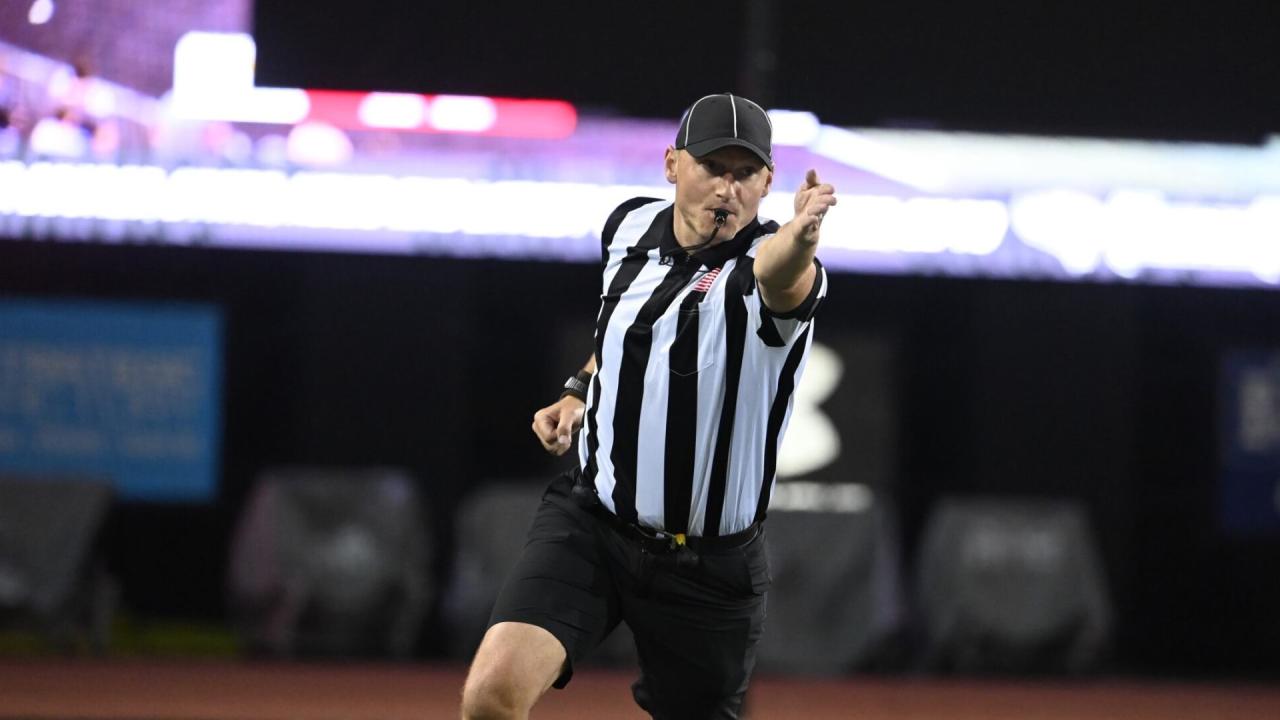
Think Fast: How to Best Officiate the Transition Game
As officials, managing the fast-paced shift from defense to offense requires keen awareness, strategic positioning and quick decision-making.
The following material is excerpted from the USA Lacrosse Official Development Program online tutorial, “Officiating the Transition Game,” with top men’s game official Nate Hoeckelman (Lincoln, Neb.) and is intended for three-man crews.
Visit usalacrosse.com/officials for more resources or to start your learning pathway.
TRANSITION TYPES
The classic definition of transition is the movement from full-field defense to full-field offense. But really, it accounts for all unsettled situations. Among them:
- Faceoffs
- Ground balls
- Interceptions/turnovers
- Quick restarts
- Broken clears
CONTESTED PLAYS BENCH SIDE
There are two officials. Who calls what? Who has eyes on the feet and ball? Who has the push? Talk about this pregame. And when the play happens, hustle to the spot, get everybody on their own bench and figure out how you’re going to restart.
OFFSIDE
It’s as simple as ABC. Always be counting.
No matter if you’re the trail, lead or single-side official — you’re looking for six a side. Counting in pairs can help. That will leave you with three at midfield if onside.
POSITIONING
Cheat where you must go. Whenever the ball is on the ground, start moving to your next position. Whenever there appears to be a turnover, start backing out of the play. On a shot, start working back out. Start running before you need it. Start jogging before you need it. Backpedal, shuffle and run with your head over your shoulder.
VISION
Look through the players. Do not focus on the ball. Open your vision to a wider field of view. Avoid tunnel vision.
LEARNING PATHWAYS
USA Lacrosse has expanded resources available in our Official Development Program to enhance educational opportunities for officials. These learning pathways provide continuing education opportunities for every level of official while also providing a dedicated curriculum for beginning officials. Go to usalacrosse.com/officials.

